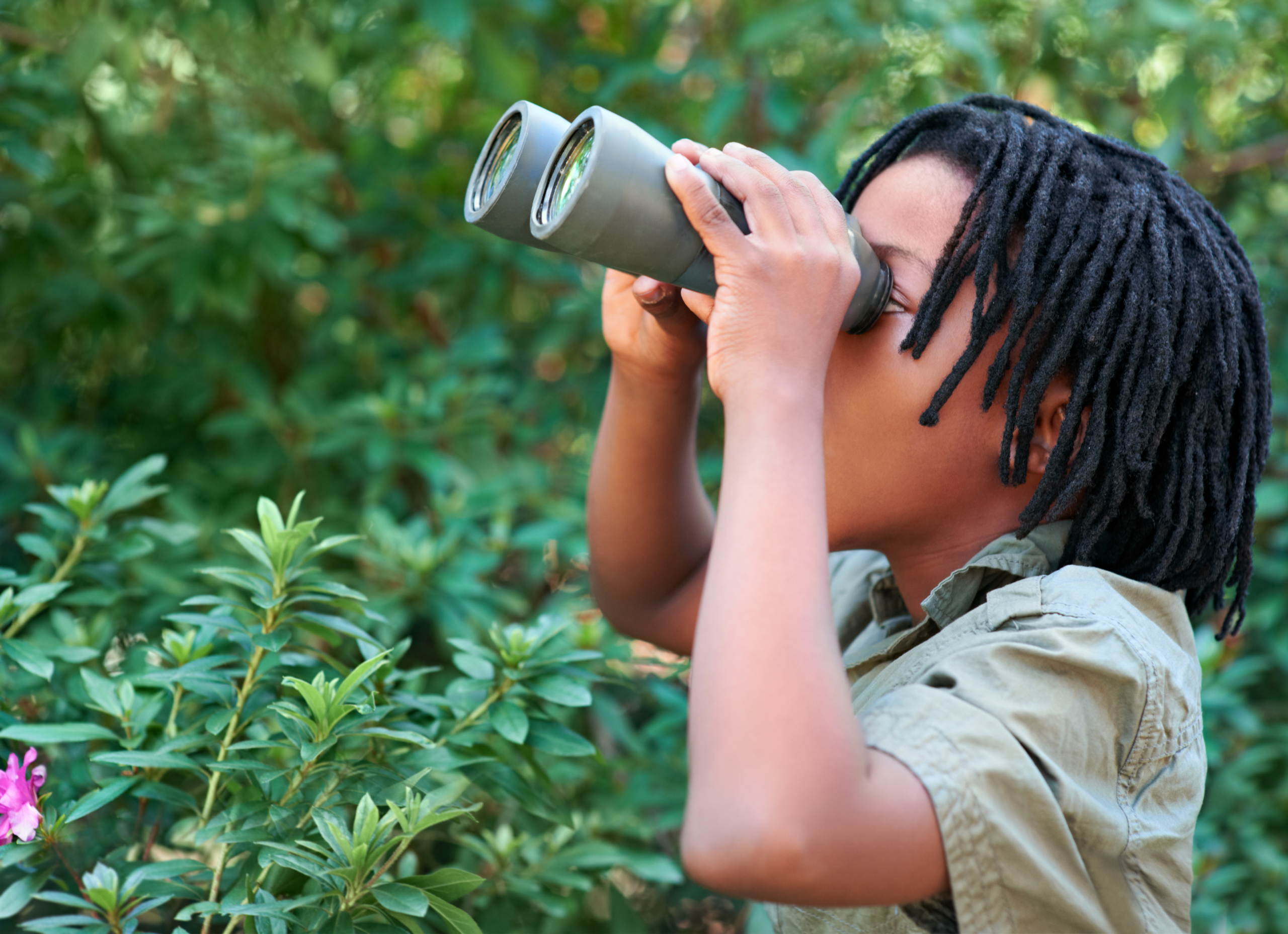By Susan Gadamus
Books about birds and nature introduce children to a whole new vocabulary and encourage observation and focus. And when you pair nature books with a walk outside, you open the door to conversations that will further enhance a child’s understanding, paving the way to eventual reading.
It doesn’t matter if you have a baby just starting to babble or an older child with a strong vocabulary. Reading and exploring together keeps the adventure going and the language flowing.
A simple walk around the block becomes a bird walk when you observe a pigeon fly by or notice a starling nesting in a streetlight. In this post, we’ll talk about how to introduce your little one to bird-watching, share a simple craft to make DIY “binoculars” that will promote focus, and give recommendations of books that will get your child excited to observe your feathered neighbors.
How to Take a Bird Walk with a Toddler or Preschooler
As you head out the door with your child, prepare them for what they might see on your bird walk. First, tell them that you’re going to look for birds. Share that you could see birds in the sky, in trees, or perching on telephone wires. Explain that you may need to be quiet or keep your distance to avoid scaring them.
To encourage observation—the first step in the scientific method—tell your child that you’re going to count all the birds you see. With an older child, say you’ll observe what the birds are doing. Are they eating, traveling, resting, or something else? Share that scientists study birds and their activities to help protect them and the places they live. You can even bring along a little notebook to note any birds you see or details about your observations. If your child is interested, they could try drawing a picture of what they see. Your focus should be on deeply engaging your child with the world.
If you have a baby or young toddler learning their words, simply describe to them the nature you see and react to their contributions, whether it’s vocalizations, pointing, or just looking in a certain direction. Responding seriously to their early attempts at communication paves the way for future literacy. On your walk, point to the birds you see and describe them: the duck is swimming in the water, a white bird flew over our heads. It’s ok to talk out loud to your baby and early talker in public; all parents do it!
Tip: If birds are hard to find, expand your gaze to include plants and find some flowers growing near the sidewalk. For those who can’t venture outside, putting up a bird feeder in your backyard or on your balcony allows your child to observe birds closer to home. When we lived in Alaska, my young toddler loved going on walks year-round to see birds and touch plants. But on days when it was too cold to venture outside, she still enjoyed watching the chickadees and squirrels at our backyard feeders.
Bird Walks Are Fun … and Build Your Child’s Brain
As children learn to talk, they build a foundation for reading and writing. When parents and caregivers talk and respond to children, they provide them with a bigger and more diverse vocabulary. This vocabulary gives these kids a leg up when they are later learning to read.
Another great thing about a bird walk is that many of the words you’ll use start with sounds that are easy to hear and say. The letter B for bird, the letter D for duck, the letter G for goose; these are all sounds that babies and toddlers find easy to mimic. And don’t worry if your child isn’t much of a talker. When my daughter was 17 months old, she wasn’t talking much yet, but she understood so much of what I said. As I told her the names for things and described what we saw on a bird walk, she was absorbing all those words for future talking and reading.
Making a pair of binoculars out of toilet paper rolls can also help older kids engage in the discussion. Follow the steps below, and encourage them to practice using the binoculars as you read a book together—see suggestions for some stellar picture books below. Then you’re ready to set out on your bird walk!
Bird Walk Craft: DIY “Binoculars”
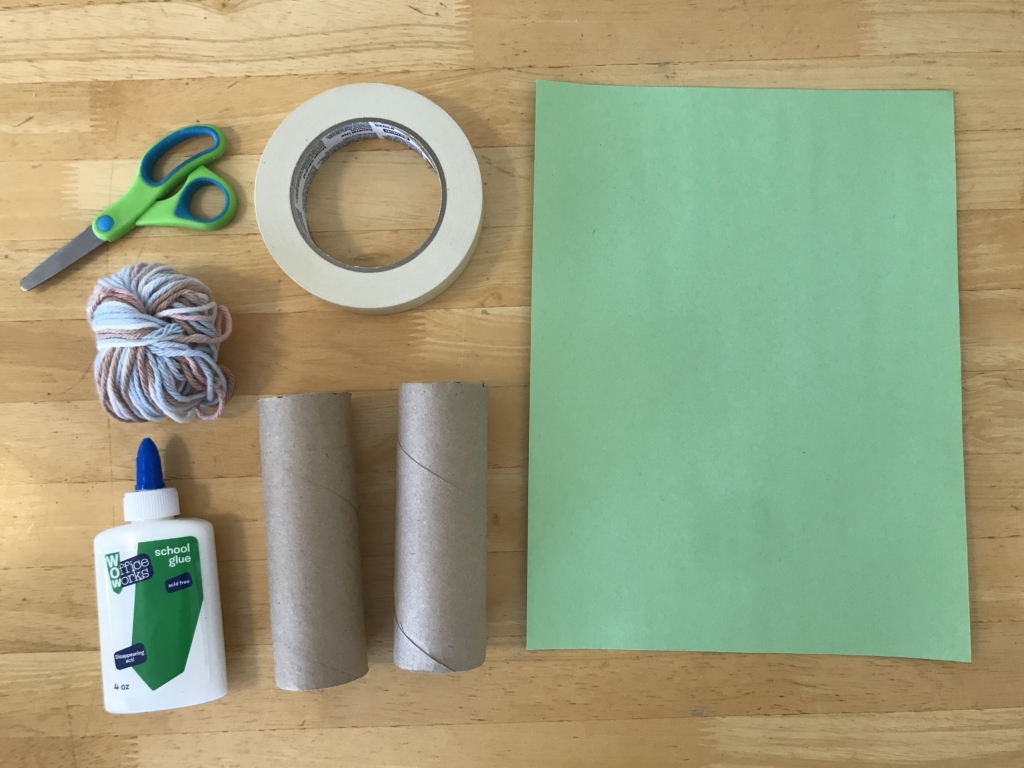
Materials (makes one pair of binoculars)
- Two toilet paper tubes, or one paper towel tube cut into equal halves
- Masking tape or white glue
- Scissors
- Yarn, string, or adult shoelace
- Construction paper, pens, glitter, tissue paper (optional)
- Hole punch (optional)
Step 1: Position two toilet paper tubes side by side and tape and/or glue them together along the long edge. If you use glue, continue to the next step while the glue dries.
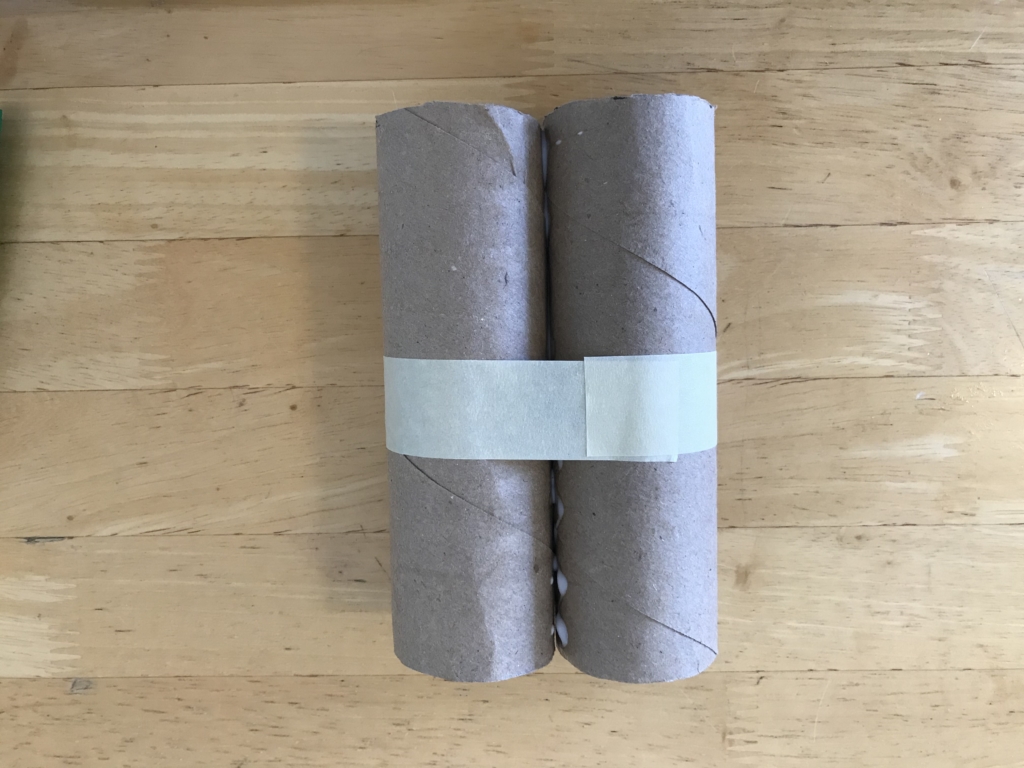
Step 2 (optional): The next two steps are optional, but add fun and decoration. Cut a standard-sized piece of construction paper roughly in half the long way, about the width of the paper tubes. Then decorate it using pens, glitter, tissue paper, or whatever! Just avoid materials that are heavy or very wet. Wrap the decorated paper around the binoculars and attach the edges using tape or glue.
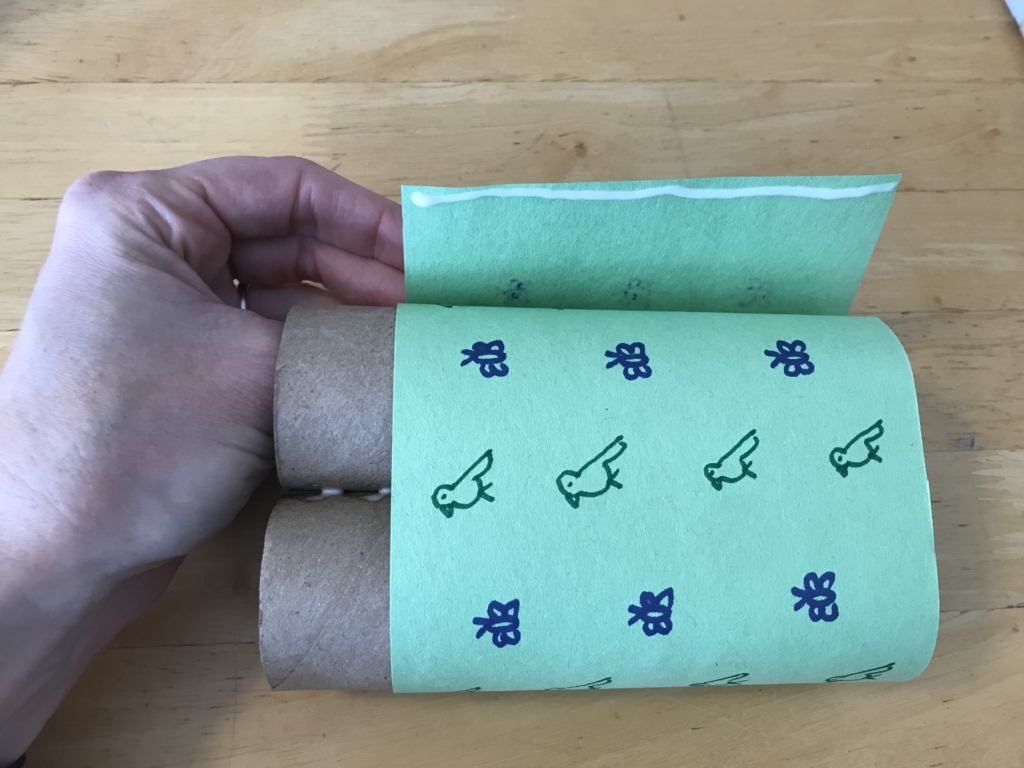
Step 3: When all glue has dried, punch a hole on the outer edge of each paper tube, or carefully use scissors to make holes. Then thread your string or shoelace into each hole and tie off each side. The binoculars should fall to your child’s chest, and be easy to take on and off. (For young children who may have trouble with the string, you can skip this step.)
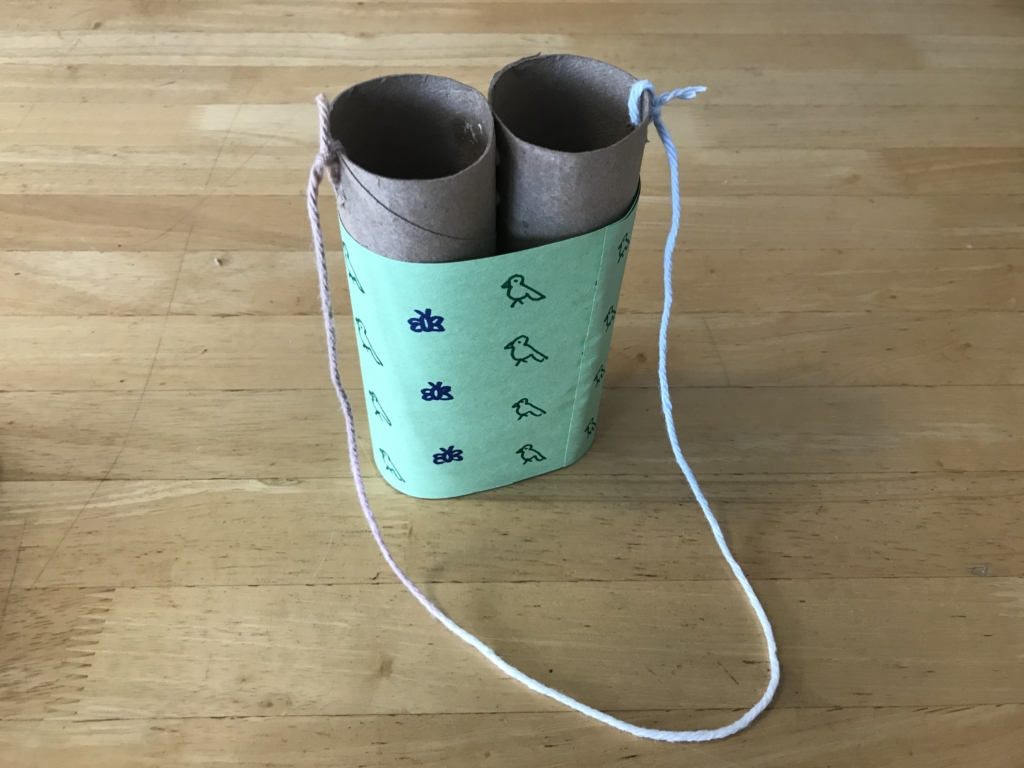
Parents, don’t forget to make a pair for yourself so you can demonstrate and join in the fun. Now that you’ve got the gear, you’re ready to use the binoculars to encourage focus during your bird walk and story time. While reading, help your child use the binoculars to look closely at the pictures. Inside and out, ask questions about what they see, and be sure to pay attention to where they choose to point their binoculars. Following their gaze is a great way to respond to their interests.
Picture Books About Birds & Nature
Before you start out, get excited for birds and nature with one of these books. Then, revisit the stories as you walk. After you get back, read them again or let your child page through them on their own as they connect the stories to their own memories.
Bird Count by Susan Edwards Richmond follows a girl and her mother as they become scientists for a day and participate in their community’s annual bird count. This enjoyable story also encourages close observation, counting, and taking notes. If your child enjoys this book, consider reaching out to a local birdwatching group to learn more about bird walks and counts in your community.
Ranger Hamza’s new book, Let’s Go For a Walk, is designed to take with you on an outing! This adventure manual is jam-packed with nature observation, questions, and science facts. Choose a couple of the pages to read before you go, or just set up shop in the park to read and discover the wild world around you.
Have You Heard the Nesting Bird? by Rita Gray focuses on a quiet robin amidst her noisy bird neighbors. Even very young babies and toddlers will enjoy the pictures and their parents’ attempts to mimic the bird calls. (Noise books are great for engaging babies in books.) Older kids will learn the value of noticing the quiet things in a noisy world.
Phyllis Limbacher Tildes’s book, Baby’s First Book of Birds and Colors, will appeal to babies and toddlers learning their colors. Pointing out the birds and flowers in this book is the perfect prelude to looking for birds and plants on a walk (or window watch).
Reading the book Beautiful Blackbird by Ashley Bryan is a wonderful way to celebrate the beauty of all colors with your child. This warm and welcoming story is strikingly illustrated with lyrical text that is a joy to read aloud.
*Photos by Susan Gadamus
Like this post? Share it!

